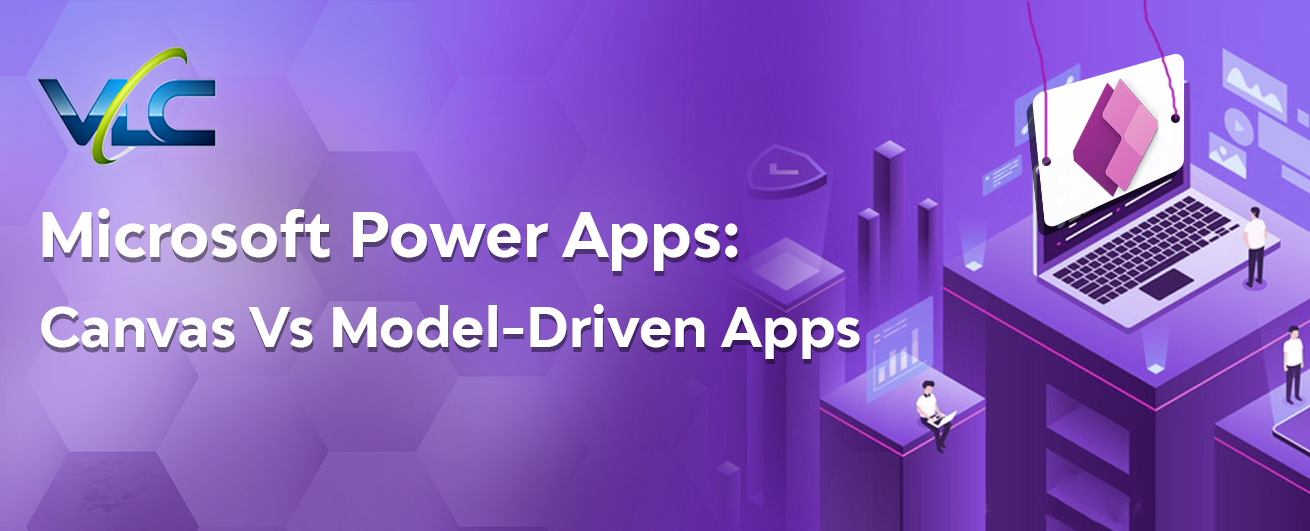Which PowerApps are Better: Model-Driven Apps over Canvas Apps
Microsoft PowerApps is a groundbreaking invention built to regularize and unify software development and ease businesses’ efforts to boot up custom-made applications swiftly. This is achieved by PowerApps through low-code development. It involves a software development approach that lets users build and develop applications by drawing and dropping elements into a flowchart- design structure.
Lately, low-code development has become widespread due to the scarcity of developers. It also rules out the need for manual code, thus transforming it into a quick and comfortable substitute to hand-written programming.
The users of PowerApps can apply the program to develop either canvas applications or model-driven applications. This blog is dedicated to defining the distinction between these two types of apps, their ways of working, and the situations of best-suited usage.
Understanding Model-Driven Applications
Model-driven applications in PowerApps are premised on the underlying data, as against Canvas Apps. More precisely, this refers to the data saved in Common Data Service (CDS). It is a safe, cloud-based storage space that businesses may employ to save data pertaining to business applications.
CDS integrates into itself all model-driven apps. As a matter of fact, it’s done so because most Microsoft apps, even the whole Dynamics 365 (D365) platform, are model-driven applications.
Model-driven apps are more inflexible than Canvas apps, essentially because they are more data-centric. Most of the user interface elements are pre-conceived and pre-chosen based on the data selection, with a little scope to modify specific segments.
Nevertheless, this data-first strategy also implies that model-driven apps are more advanced than canvas apps, making them wholly germane for apps that entail elaborate business logic. Model-driven applications are further structurally active and receptive and tend to fork out themselves based on the device in use.
Understanding Canvas Applications
Canvas apps denote precisely what they are named after-PowerApps renders a fresh canvas upon which one may easily drag and drop elements in any configuration to compose a custom user interface. After everything is fitted as per desire, you may go ahead and make supplementary corrections to the size, style, and format of all elements in the game. Once you’re convinced with your scheme of design, you may link it with one or more data sources utilizing necessary, Excel-style codes.
The principal attraction of Canvas Apps in PowerApps is the smoothness of their use. Considering one is free from data structures in Canvas Apps, these apps allow a much deeper instinctive user experience as compared to model-driven apps. Having a basic understanding of PowerPoint and Excel formulae can easily help one to develop Canvas Apps.
Canvas Apps also enable a considerable measure of creativity and uniqueness, and no two separately developed applications are ever the same, totally. And an added bounty is that Canvas Apps can draw data from more than 200 individual data integration reservoirs on a turn-key basis, causing them to be more adaptable than Model-Driven Apps.
One drawback is that Canvas Apps are not active by design structure. They render two basic design possibilities- landscape or portrait orientation. Having said this, it is still conceivable to build Canvas Apps responsively by merely altering the size and placement of various controls in accordance with the size of the screen by adopting hard-coded attributes. Nonetheless, this method needs to be done repeatedly for every single control inside the app, which could come in bulky numbers, hence making it cumbersome and slow-moving.
Model-Driven Apps vs. Canvas Apps
As well interpreted, both Model-Driven Apps and Canvas Apps are ideally suited for diverse use situations.
Canvas Apps are excellent for developing job-based or use-based applications. For instance, you may be holding a team in your customer service division that is surely accountable for producing customer support tickets. Considering that this team concentrates wholly on a single task, it possibly may not need the entire Microsoft suite working capacity.
In effect, so many functionalities, without a proper necessity, can be quite enormous and can hinder the team from carrying out its intended task. In such circumstances, it is advisable to develop a Canvas App explicitly committed to creating tickets.
On the contrary, Model-Driven Apps are more suited for designing over the edge business app solutions. For instance, following the creation of a customer service support ticket, it needs to be routed, labeled, renewed, listed as finished, etc. There will presumably be a pretty more number of teams, tasks, and methods associated with this comprehensive case resolution sequence, which might call for a Model-Driven App.
Charge your Business Intellect with VLC Solutions
PowerApps is an emergent and recent invention, and Microsoft customers are slowly plodding their way into the idea of creating Canvas and Model-Driven Apps. At VLC Solutions, we commit ourselves to assist our customers in charging and challenging their business intellect, surpassing the conventional assortment of pre-engineered Dynamics 365 applications. We shall enable you to transform your resources and business intelligence into something distinguished and extraordinary through a portrayal of how you could design personalized custom applications to meet your unique business demands.
